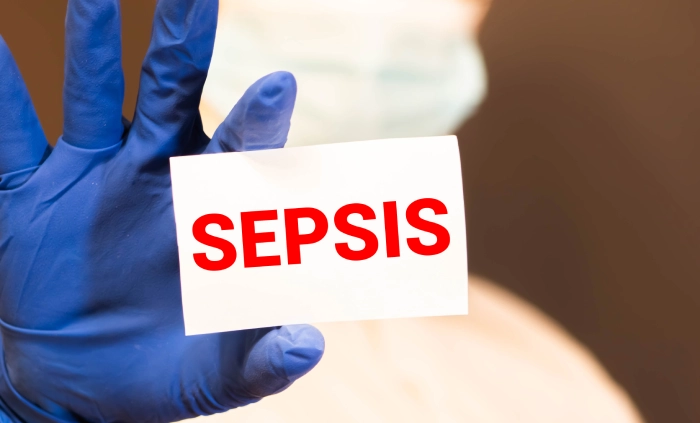New Guidelines Aim to Reduce Surgical Site Infections in Pain Procedures
The field of pain medicine has taken a significant step forward with the publication of the first comprehensive guidelines for minimizing infections in patients undergoing regional anesthesia and interventional pain management procedures. These guidelines, published in Regional Anesthesia & Pain Medicine, address a critical gap in infection control practices specific to pain management procedures.
While infection control guidelines exist for various medical fields, these new recommendations are tailored explicitly for physicians treating pain patients. The guidelines cover a wide range of procedures, from routine cortisone injections to more complex interventions like spinal cord stimulation (SCS) for chronic pain and drug delivery pump implants.
The importance of these guidelines cannot be overstated. Surgical site infections (SSIs) are the second most common type of healthcare-associated infections (HAIs) in the United States. Although the infection rate for most pain procedures is relatively low, when infections do occur, they can lead to severe complications, including paralysis and death in extreme cases. Moreover, treating these infections can be challenging and costly for both patients and healthcare systems.
One of the driving factors behind the development of these guidelines is the alarming lack of compliance with existing infection control practices. A recent international survey of 506 physicians performing SCS implants revealed that only 4 out of 15 infection control questions had compliance rates of 80% or higher. This finding underscores the urgent need for standardized, evidence-based recommendations in the field.
Dr. David A. Provenzano, the lead author of the guidelines and president of ASRA Pain Medicine, emphasized the significance of this development: “Due to the increasing complexity of interventional pain procedures, the rapidly advancing field, and a lack of evidence-based recommendations, there is inconsistency in the practice of regional anesthesia and acute and chronic pain medicine related to infection prevention and management. These new guidelines help address these issues and improve outcomes.”
The guidelines were developed over three years by a team of 23 authors, including specialists in regional anesthesia, pain medicine, infectious diseases, and perioperative care. They analyzed over 80 research questions and classified pain procedures into several categories, including musculoskeletal and peripheral nerve blocks, neuraxial and paravertebral blocks, neuromodulation, and minimally invasive and surgical-type interventional pain procedures.
The recommendations cover a wide range of topics, including preoperative patient risk factors, management in various healthcare settings, sterile techniques, equipment use and maintenance, surgical techniques, postoperative risk reduction, infection symptoms, diagnosis, and treatment. The guidelines also stress the importance of considering each patient’s unique characteristics, such as age and underlying health conditions like diabetes mellitus.
Key recommendations include specific practices for environmental cleaning, syringe tip and injection port disinfection, and frequent handwashing. The guidelines also advocate for administering intravenous antibiotics before invasive procedures, using sterile probe covers and ultrasound gel during procedures, and applying bio-occlusive dressings after surgical implant procedures.
The timing of these guidelines is particularly relevant, given the recent increase in SSIs reported by the Surgical Care Improvement Project (SCIP). In 2023, SCIP noted a 3% increase in SSIs compared to the previous year. SSIs account for approximately 20% of all HAIs and cost an estimated $3.3 billion annually.
Dr. Provenzano highlighted the potential impact of these infections on patient care: “SSIs can cause significant patient suffering. For example, patients receiving a spinal cord stimulator implant may abandon therapy if they get an infection following the surgery. Research shows nearly three-quarters of patients who experience an infection and need to have their device removed will not have a new one implanted.” He also noted that the costs associated with an HAI related to an initial SCS are approximately $60,000 per patient.
These new guidelines are expected to play a crucial role in addressing the educational needs identified by the CDC and WHO regarding infection control. ASRA Pain Medicine plans to provide extensive education around the guidelines through online learning platforms and lectures at professional meetings. Furthermore, the guidelines are intended to be incorporated into staff learning models at hospitals and surgical centers, potentially leading to a significant reduction in infection rates and improved patient outcomes.
Commentary by SuppBase columnist Alice Winters:

The publication of these groundbreaking guidelines marks a pivotal moment in the field of pain medicine and anesthesiology. As an expert in health product commentary, I find several aspects of this development particularly noteworthy and promising for both practitioners and patients alike.
First and foremost, the creation of these tailored guidelines addresses a critical gap in infection control practices specific to pain management procedures. This specificity is crucial, as it acknowledges the unique challenges and risks associated with these interventions. By providing clear, evidence-based recommendations, these guidelines have the potential to significantly reduce the incidence of surgical site infections in pain management procedures, thereby improving patient outcomes and reducing healthcare costs.
The comprehensive nature of these guidelines is particularly impressive. Covering everything from preoperative risk assessment to postoperative care, they provide a holistic approach to infection control. This thoroughness is essential in a field where procedures can range from simple injections to complex implant surgeries, each with its own set of infection risks.
Moreover, the emphasis on patient-specific considerations is a commendable aspect of these guidelines. By encouraging practitioners to take into account factors such as age and comorbidities like diabetes, the guidelines promote a more personalized approach to infection prevention. This aligns well with the growing trend towards precision medicine and individualized patient care.
The alarming statistics regarding compliance with existing infection control practices underscores the urgent need for these guidelines. The fact that only 4 out of 15 infection control questions had compliance rates of 80% or higher in a survey of SCS implant physicians is a stark reminder of the work that needs to be done in this area. These new guidelines provide a clear roadmap for improving these compliance rates.
From a market perspective, the implementation of these guidelines could have significant implications. For medical device manufacturers in the pain management field, this could drive innovation in infection-resistant materials and designs. For healthcare providers, it may necessitate investments in new equipment and training programs. However, the potential reduction in infection-related complications and associated costs could offset these initial investments.
It’s also worth noting the potential impact on patient trust and satisfaction. As patients become more informed about healthcare-associated infections, the adoption of these guidelines could serve as a differentiator for pain management clinics and hospitals, potentially influencing patient choice and loyalty.
In conclusion, these new infection control guidelines represent a significant advancement in the field of pain medicine. Their implementation has the potential to dramatically improve patient safety, reduce healthcare costs, and elevate the standard of care in pain management procedures. As the field continues to evolve, it will be crucial for practitioners to stay abreast of these guidelines and for researchers to continue refining them based on real-world outcomes and emerging evidence.



